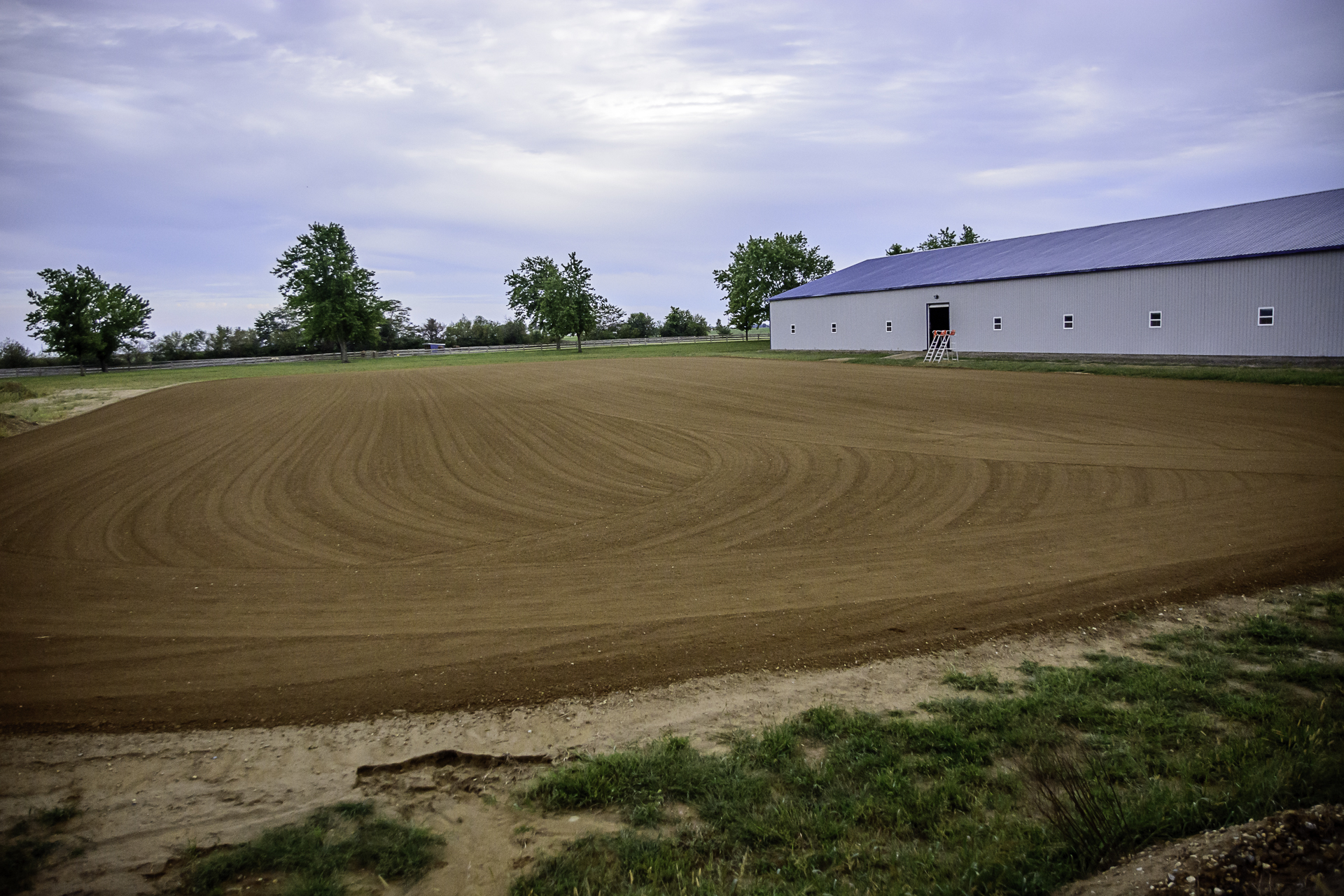By keeping their properties in the best shape possible, NRHA Professionals can make good first impressions on clients and preserve the confidence of their existing customers.
By Kristin Pitzer

Imagine, as a prospective client, visiting training facilities for a futurity prospect. One facility is immaculate: the floors are swept, tack is put away, and the overall aesthetic is just nice to look at. Another is dilapidated, with broken fencing, unkempt landscaping, and rusting equipment abandoned where it last stopped. Which would you pick to leave your prized investment?
It may seem shallow to some people, but the curb appeal of a training facility is very important in the equine business. The grounds don’t necessarily have to be elaborate—simply making the effort to maintain a facility in top shape can leave a nice impression. No matter if you’re a multimillion-dollar rider or an up-and-comer, having an aesthetically pleasing facility can help gain new clients and give a sense of security to those who are already customers.
In this three-part series, NRHA Professionals Bob Avila, Shannon Quinlan Hill, Robin Schoeller, and Mark and Shannon Rafacz share their thoughts on these topics:
Part 1: First Impressions Count
Part 2: Worth the Effort
Function Over Form
While unique features can add to a property’s curb appeal, it’s important to remember that the facility is still a horse-training operation. As such, it needs to have amenities that are functional and not just pretty.
When Quinlan was looking for a property to rent, they were drawn to their current home for several reasons. Quinlan said the property, which was designed by a Western pleasure trainer, has lots of natural beauty, but she even more so appreciated its functionality, a perk that continues to entice clients looking to escape the harsh Pennsylvania winters.
The facility is set up so that everything can be done indoors. The arena is connected to the barn, there’s a double door system so heat can’t escape, and the round pen is covered. These things allow her clients to ride year-round, whereas many in the area can’t.
“Being functional is huge; a good layout is super-important,” Quinlan said. “I think if it’s not functional, it doesn’t matter how pretty it is. But it’s very nice, and we’re lucky to be there. It gives people a good feeling when they walk in, especially selling horses. We keep everything as clean as possible and put away, and I think it just creates a higher-end environment.”
Conversely, Avila’s Arizona place, a former Arabian stable, was designed to look fancy, but wasn’t necessarily built to work out of. He invested in redoing it to fit his business while also cleaning it up, since it sat without much maintenance before he purchased it. With only 12 stalls, the facility is a far cry from the 130 head of horses he had before semi-retiring. But, it boasts an office with a trophy room and an indoor arena, giving it the “wow factor.”
“Practical and useable are probably the most important things, and then how you take care of it,” Avila said. “I think you’ve got to have a little bit of both [function and aesthetics], but I guess function would be the first thing. Like the trucks and trailers going down the road, you don’t have to have the fanciest truck, but just take care of the equipment you have so when people pass you on the highway they don’t go, ‘I don’t want my horse in that!’”
At the time the Rafaczes purchased their acreage in Citra, the only thing on the property was a house. They were able to lay out the rest of it—a barn, arena, turnout paddocks—in a way that was best suited to their use. Mark designed the barn so that air would constantly flow through, thus protecting horses and people from the Florida heat.
“Form and function I think are extremely important with what we do because people are just kind of coming in to do their job and leave,” Rafacz said. “They want to have a nice experience.”
When customers are comfortable and able to enjoy their riding time, they’re more willing to leave their horses in training at a particular place. Though facility maintenance can be a large part of day-to-day business, keeping an operation in tip-top shape goes a long way toward gaining a client’s trust and letting them feel secure in their horse care choice.
“I think the curb appeal of a clean, organized barn is part of customer service, to provide them with a pleasant and safe environment where they can enjoy spending their free time and be assured that their horses are taken care of,” Schoeller said. “I think a lot of young trainers come in and see the big guys with all that fancy equipment and think that’s exactly what they need to get clients. We designed and built our facility with our clients in mind, but it’s how you take care of what you have that matters the most. That presentation and impression to current and potential clients is very important.”
Read the rest of this article at the links above.



